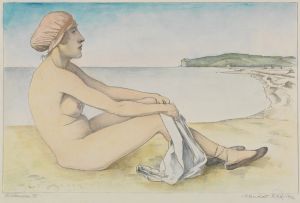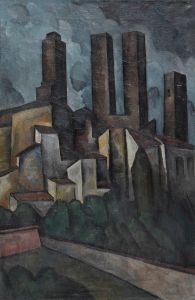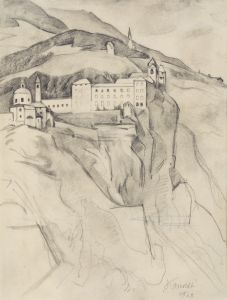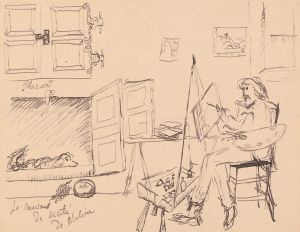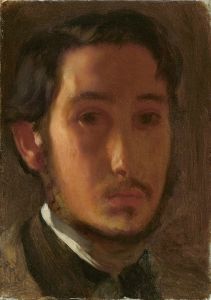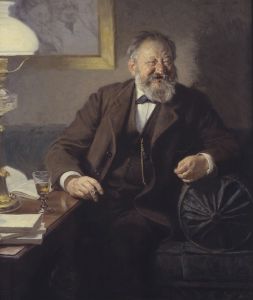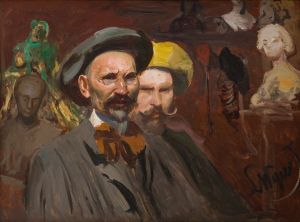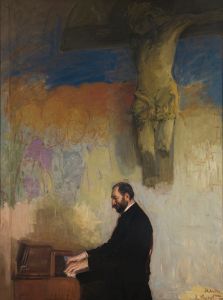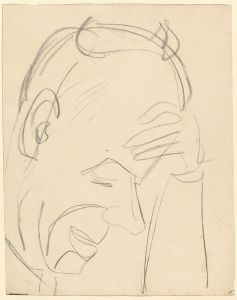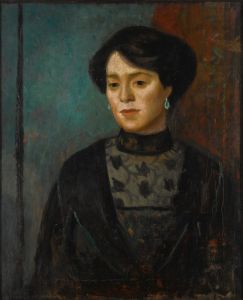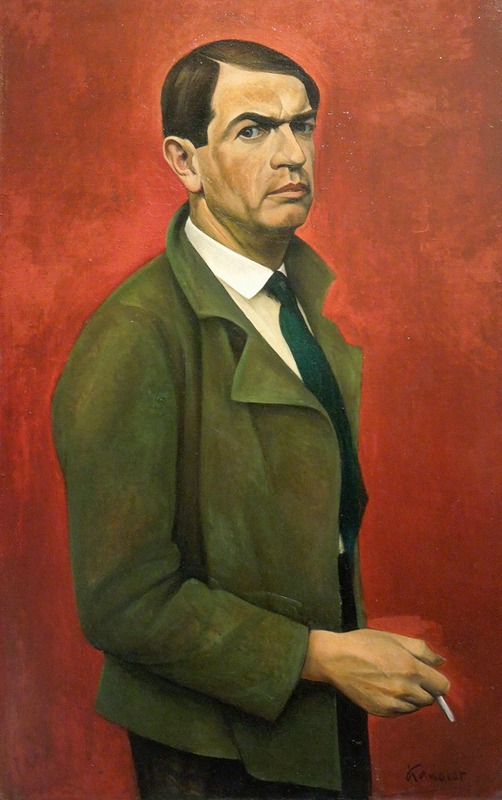
Self-Portrait
A hand-painted replica of Alexander Kanoldt’s masterpiece Self-Portrait, meticulously crafted by professional artists to capture the true essence of the original. Each piece is created with museum-quality canvas and rare mineral pigments, carefully painted by experienced artists with delicate brushstrokes and rich, layered colors to perfectly recreate the texture of the original artwork. Unlike machine-printed reproductions, this hand-painted version brings the painting to life, infused with the artist’s emotions and skill in every stroke. Whether for personal collection or home decoration, it instantly elevates the artistic atmosphere of any space.
Alexander Kanoldt was a German painter associated with the New Objectivity movement, which emerged in the 1920s as a reaction against expressionism. Kanoldt was born on September 29, 1881, in Karlsruhe, Germany, and he became known for his still lifes and portraits characterized by their precise detail and clarity. One of his notable works is his self-portrait, which reflects the stylistic tendencies of the New Objectivity movement.
Kanoldt's self-portrait is an example of the movement's focus on realism and objective representation. The New Objectivity, or Neue Sachlichkeit, was a movement that sought to depict the world with a sense of detachment and clarity, often highlighting the mundane or everyday aspects of life. This movement was a response to the emotional intensity and abstraction of expressionism, and it aimed to present a more sober and realistic view of the world.
In his self-portrait, Kanoldt employs a meticulous technique, emphasizing clean lines and a smooth surface. The painting is characterized by its attention to detail and the careful rendering of textures and forms. This approach is typical of the New Objectivity style, which often involved a high degree of technical skill and a focus on the material reality of the subject.
The self-portrait likely reflects Kanoldt's own exploration of identity and self-perception, a common theme in portraiture. By presenting himself with a sense of clarity and precision, Kanoldt aligns himself with the movement's ideals of objectivity and realism. The painting does not indulge in emotional expression or dramatic flair; instead, it offers a straightforward and unembellished depiction of the artist.
Kanoldt's work, including his self-portrait, contributes to the broader context of the New Objectivity movement, which included other artists such as Otto Dix and George Grosz. These artists shared a commitment to depicting the world with a sense of realism and often addressed social and political themes in their work. While Kanoldt's self-portrait may not overtly engage with these themes, it nonetheless embodies the movement's aesthetic principles.
Throughout his career, Kanoldt participated in various exhibitions and was involved with the Munich New Secession, a group that promoted modern art in Germany. His work was recognized for its technical precision and adherence to the principles of the New Objectivity.
Kanoldt's self-portrait remains an important example of the New Objectivity movement and reflects the broader artistic trends of the early 20th century in Germany. His dedication to realism and objective representation continues to be appreciated by art historians and enthusiasts who study the period. The painting serves as a testament to Kanoldt's skill as an artist and his contribution to the development of modern art in Germany.






